This post may contain affiliate links. See our disclosure policy.
If you’re looking to make your own Chinese food at home instead of spending money on takeout, then this copycat Panda Express Chow Mein recipe is perfect for you!
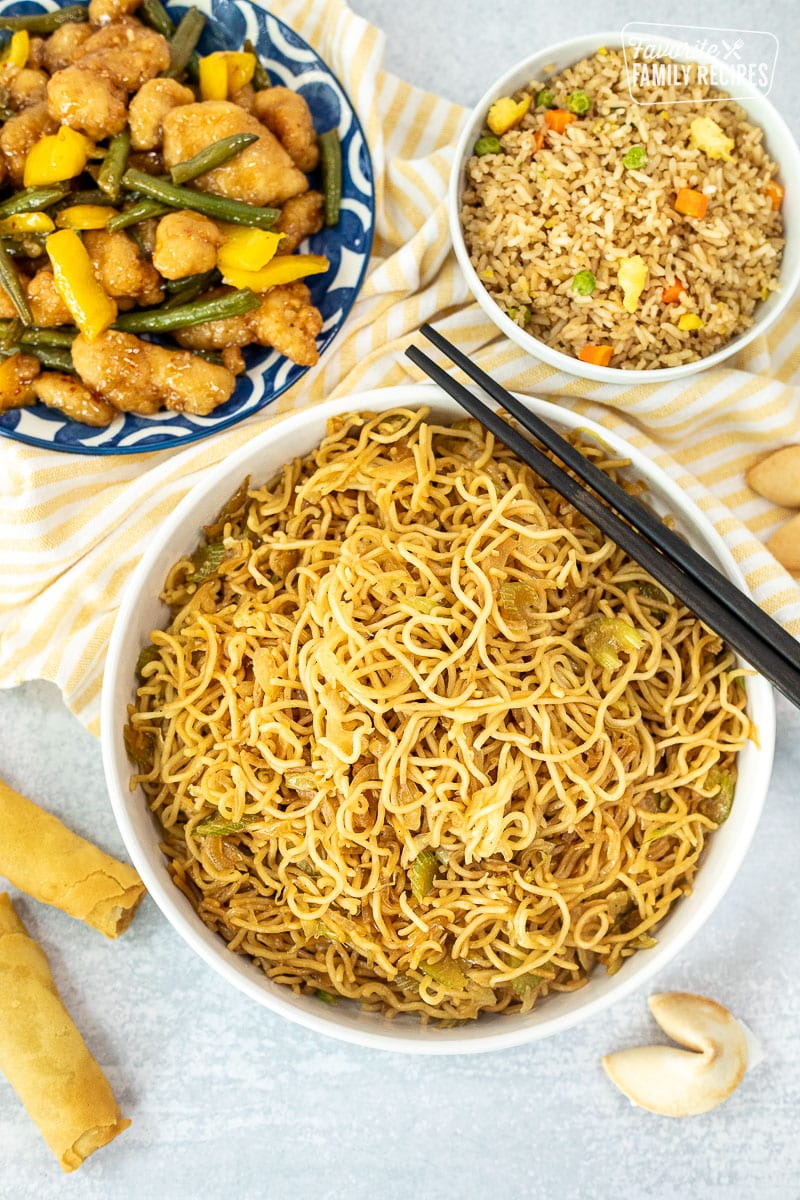
Panda Express Chow Mein is a side dish that you can get at Panda Express. It’s made with noodles and vegetables. This Chow Mein recipe is a very close replica of the restaurant’s signature side dish. Make a healthier version of this Chow Mein at home for a fraction of the price!
This easy Chow Mein recipe uses fresh, simple ingredients from right in your own pantry, and it can be on your table in less than 30 minutes! It’s one of those recipes that makes enough to feed the whole family, so if there are leftovers, you can store them in a sealed container. The noodles reheat beautifully and you can eat from this dish for up to a week!
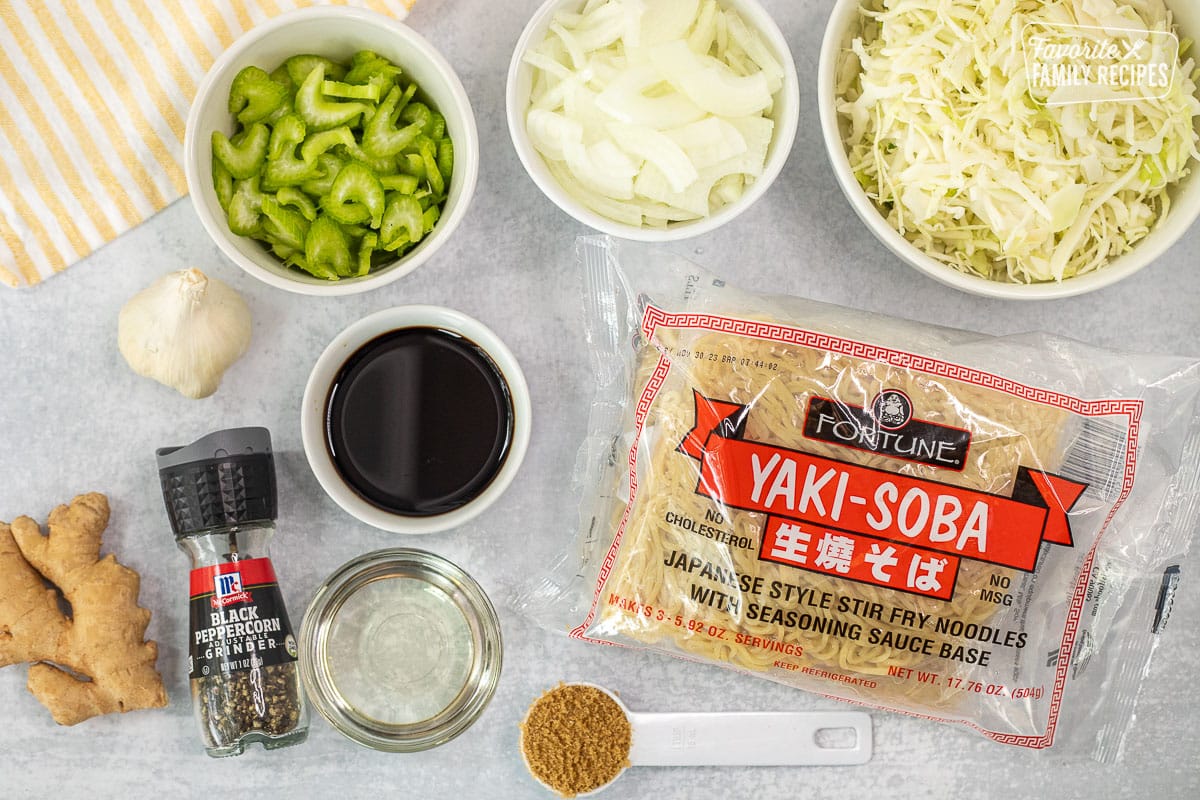
Panda Express Chow Mein Ingredients
The ingredients in Panda Express Chow Mein are simple. I love how Panda Express doesn’t complicate things. Of course, if you are making this on your own you can take your own creative liberties and add extras to your liking. Here’s the basic ingredients:
- Chow mein noodles: Prepared according to package instructions. Yakisoba noodles, lo mein noodles, or even ramen noodles can also be used. If using ramen, I have found they work out best if they are undercooked by a minute.
- Onion (white or yellow onion)
- Celery
- Cabbage
- Chow Mein Sauce
Chow Mein Sauce:
For this chow mein sauce we only use a few simple ingredients:
- soy sauce
- brown sugar
- garlic
- ginger
- black pepper
You can also add a little oyster sauce or a splash of cooking Chinese cooking wine to the sauce for more depth of flavor. If you want to make more of a saucy sauce (not like Panda Express and more of a lo-mein style), you can double the sauce recipe, and add a cup of chicken broth. Heat the sauce on the stovetop until sugar is dissolved and slowly add a slurry of cornstarch and water until the sauce slightly thickens JUST enough to lightly coat a spoon. Then add the sauce to the noodles to taste (you may not want to use all of it).
If you want to get creative, you can add:
- Chicken, beef, or shrimp
- Carrots
- Red bell pepper
- Snow peas
- Shitake mushrooms
- Bean sprouts
- Green onion
- Egg
- Tofu
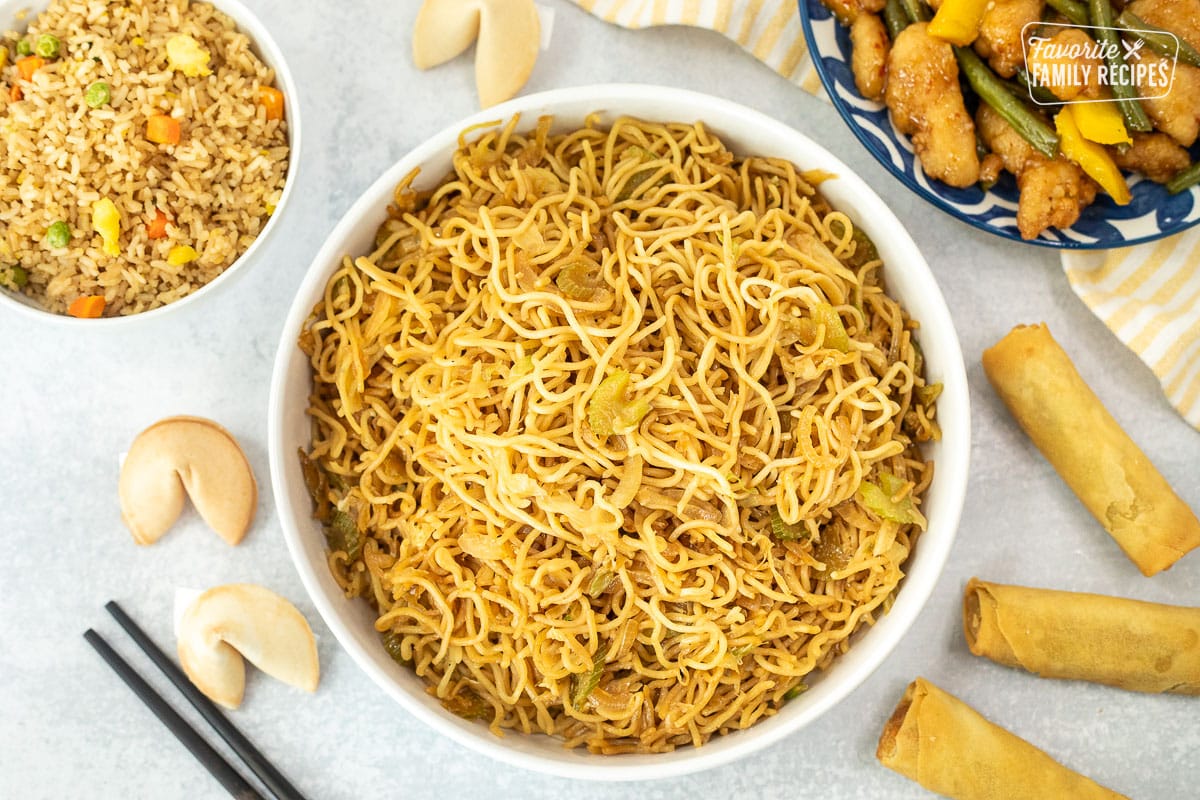
Chow Mein vs Lo Mein
Sometimes, it is difficult to tell the difference between chow mein and lo mein, but after I go through the three main differences, you will easily know which is which. The biggest difference is simply knowing that one is stir-fried and the other is tossed in sauce.
Chow Mein:
- Translation: Translated, “chow mein” means “fried” or “stir-fried” noodles.
- Preparation: Chow mein noodles are parboiled and then stir-fried in a wok with vegetables and other ingredients until the noodles cooked through
- Texture: Because chow mein noodles are stir-fried, the noodles become slightly crispy and a bit oily. The fried texture makes it so it can’t really be “slurped”. Some think that chow mein noodles are strictly crunchy, deep fried noodles, like the kind that comes in a canister, but that is only one type of chow mein noodle. The most common kind of chow mein noodle is the stir-fried kind, like they use at Panda Express.
- Sauce: There is very little, if any, sauce with chow mein noodles.
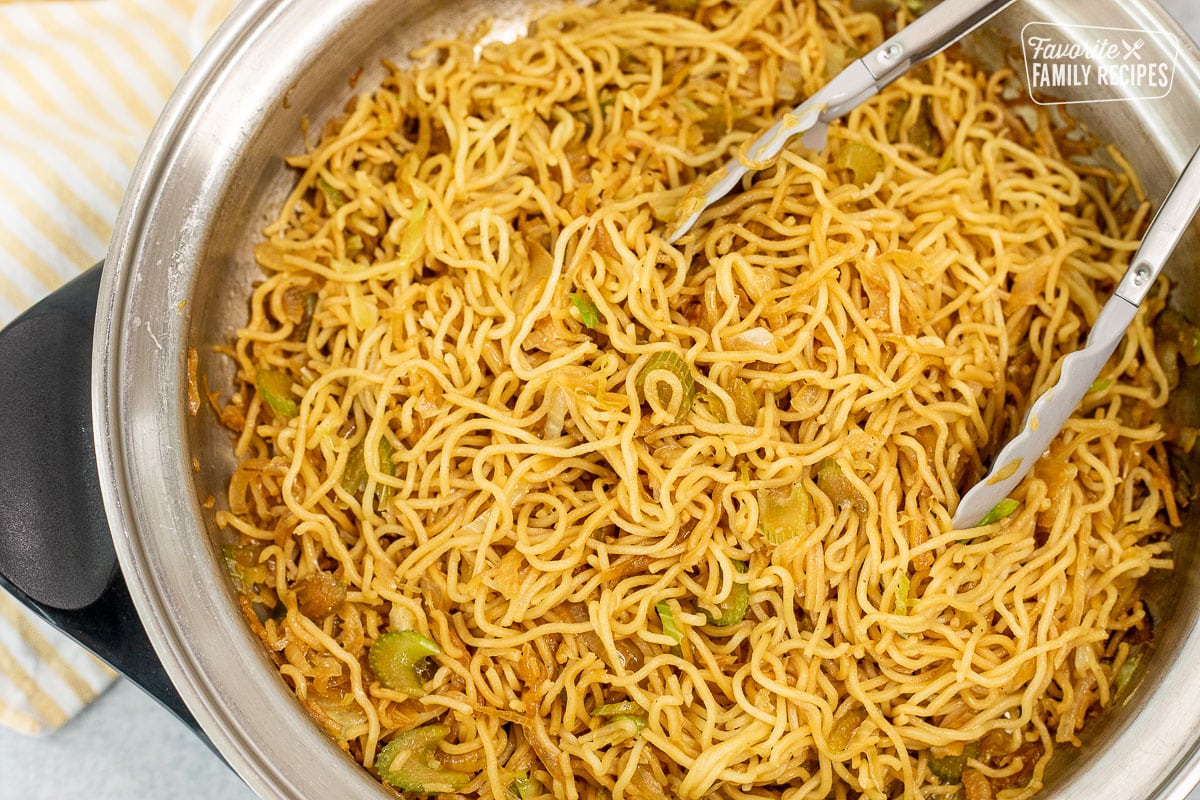
Lo Mein:
- Translation: Translated, “lo mein” means “tossed” noodles.
- Preparation: Lo mein noodles are parboiled until soft and then tossed with sauce and other ingredients.
- Texture: The texture is more soft in a lo mein noodle. It feels similar in texture to a spaghetti noodle. A lo mein noodle is easy to slurp.
- Sauce: Lo mein is tossed in a good amount of sauce.
Some may argue that Panda Express chow mein is a LO mein, but looking over these qualifications above, you know that is actually IS a chow mein. Panda got it right. The noodles are stir-fried, they are a little oily, there is little sauce used, and they aren’t easy to slurp. In my opinion, it all comes down to that “slurp” test! Now, can you make this recipe a lo mein if you wanted to? Absolutely! It is DELICIOUS as a lo mein! Just boil up your noodles separately and double the sauce. Toss together and serve.
What Kind Of Noodles Are Best?
You can use various types of noodles for chow mein, and as long as you stir fry them in some oil, you’re good to go! We prefer Yakisoba because it consistently provides the right texture, but you can also cook dry lo mein noodles, drain them well, and then stir fry them in oil. Ramen noodles are another option. Whichever type you choose, remember to discard any included flavor packets. If you don’t have any of these noodles available, you can still use simple spaghetti or linguini noodles by stir-frying them.
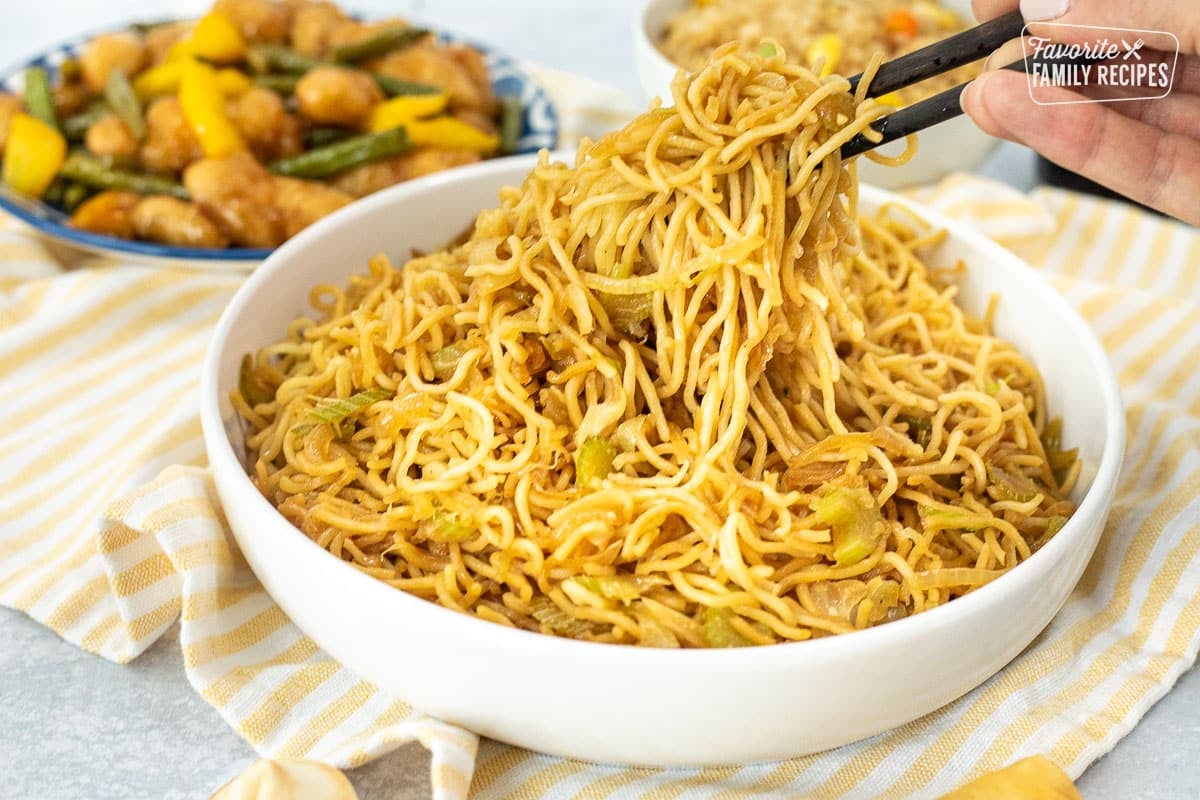
Suggestions for this Recipe
- This simple recipe makes several good sized servings, so if you find yourself with leftovers, store it in a sealed container in the fridge. The noodles reheat beautifully and you can eat from this dish for up to a week!
- Use a large wok, skillet, or deep-walled non-stick pan to make stir-frying easier.
- In this recipe, you can add a shake or two of sesame oil to the vegetable oil to add a deeper flavor, but make sure to use it sparingly. The sesame oil flavoring can overpower the rest of the flavors. I have made it both ways (with and without sesame oil) and they both taste great.
- This recipe calls for celery, onion, and cabbage but you could add shredded carrots, pea pods, broccoli, or any of your favorite veggies to this dish.
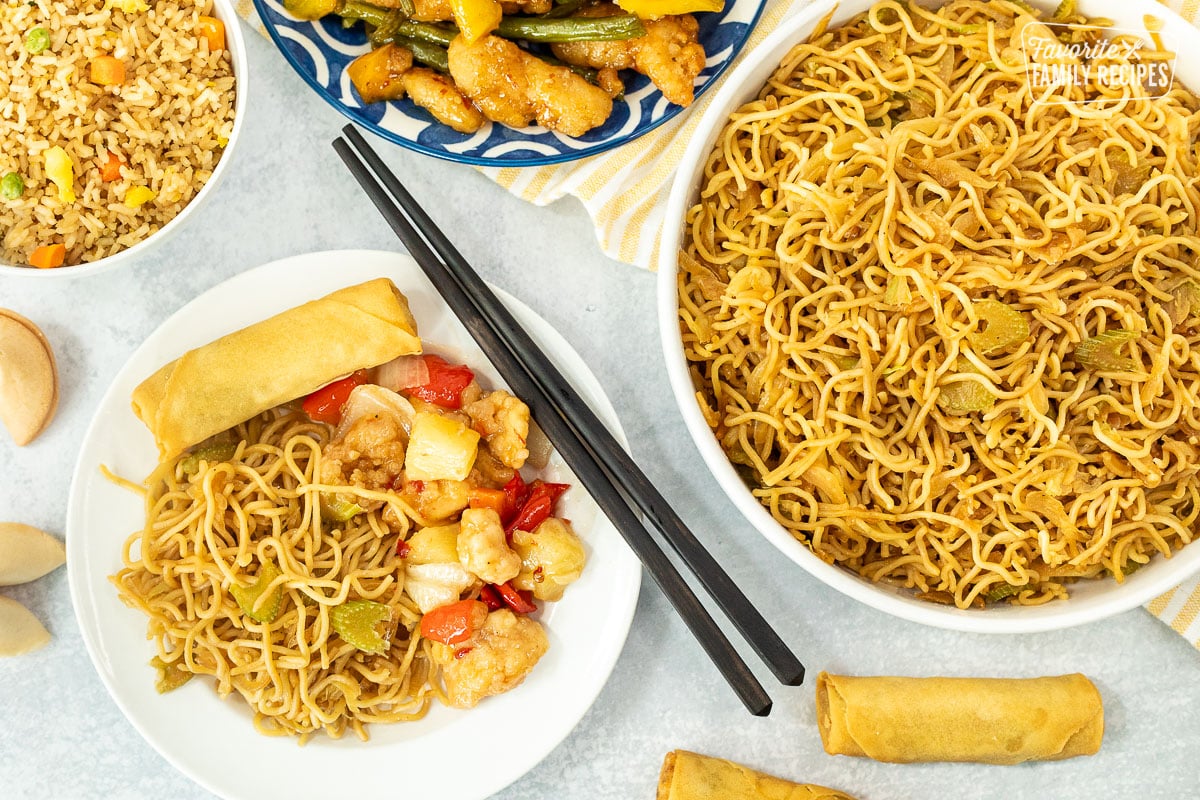
Storing and Reheating Chow Mein
To store leftover chow mein, cool it down to room temperature and place it in an airtight container. Refrigerate for up to 4-5 days. To reheat, use the microwave for quick warming, the stovetop for better control, or the oven for larger portions. For microwave and stovetop, add a touch of oil, if needed, and heat until it’s heated through. In the oven, cover with foil and bake at 350°F for 20-30 minutes. Keep an eye on it to prevent overcooking. You may need to add a bit of water or sauce to maintain moisture. Enjoy your reheated chow mein!
More Panda Express Recipes
Pair this Chow Mein with some of our other Asian-inspired recipes like Kung Pao Chicken, Chinese Barbeque Pork or any of these other Panda Express recipes:
Frequently Asked Questions About Chow Mein
Chow mein is a noodle made from wheat flour and egg.
In this recipe, we use soy sauce, brown sugar, ginger, and garlic to make chow mein sauce.
Lo mein is healthier simply because the noodles used in lo mein aren’t fried.
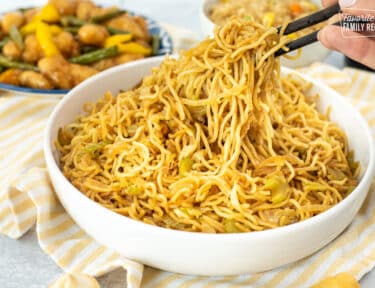
Panda Express Chow Mein (Copycat)
Video
Ingredients
- ¼ cup soy sauce
- 1 tablespoon brown sugar
- 2 cloves garlic, minced
- 1 teaspoon grated fresh ginger
- ground black pepper, to taste
- 2-3 tablespoons vegetable oil
- 3 (5.6 ounce) packages Yakisoba noodles or Chinese Egg Noodles (Found in the produce section of the grocery store. Usually, the 3 packages are sold together in one 17oz. pack)
- ⅔ cup diagonally chopped celery chopped diagonally
- 1 medium onion, thinly sliced
- 2 cups chopped cabbage
Instructions
- In a small bowl, combine soy sauce, brown sugar, garlic, ginger, and black pepper. Set aside.
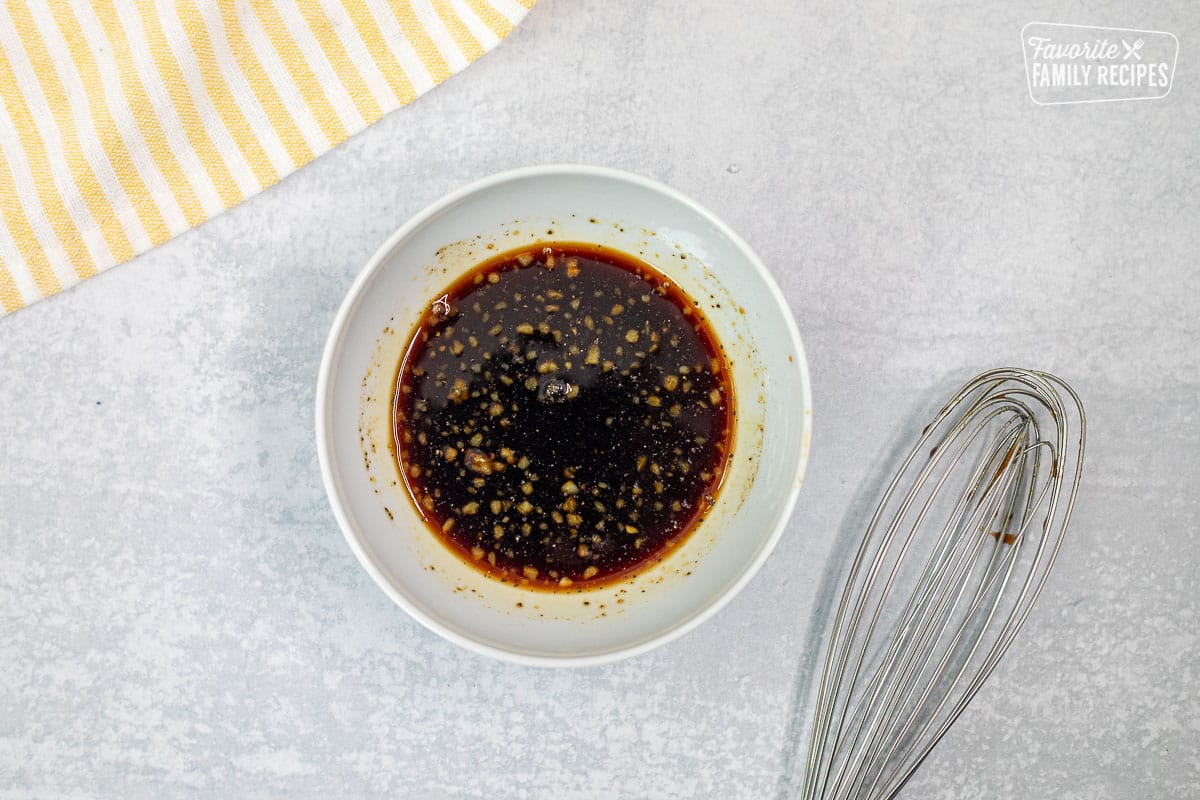
- Remove noodles from packages and discard included flavoring packets. Rinse noodles well, drain, and set aside.
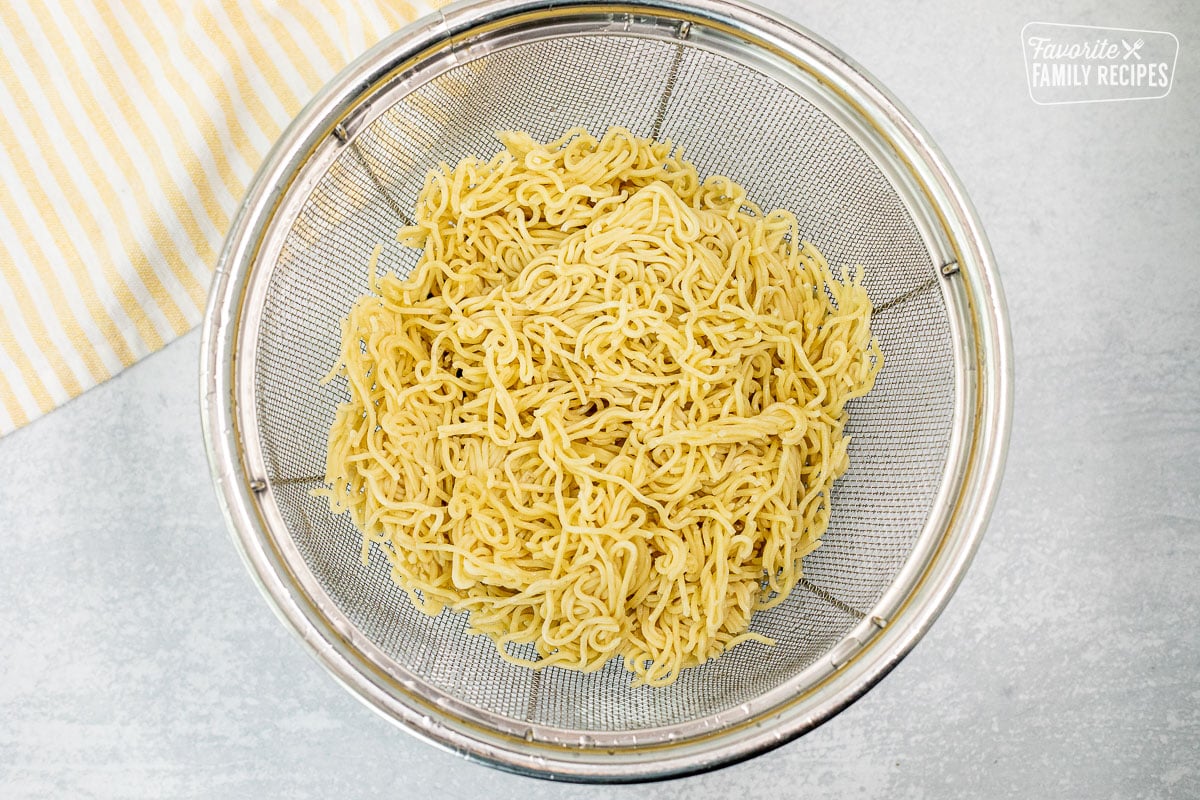
- Heat oil in a large wok or skillet over medium heat. Add celery and onion and sauté for about 1-2 minutes or until onions start to become soft and transparent. Add cabbage and sauté an additional minute.
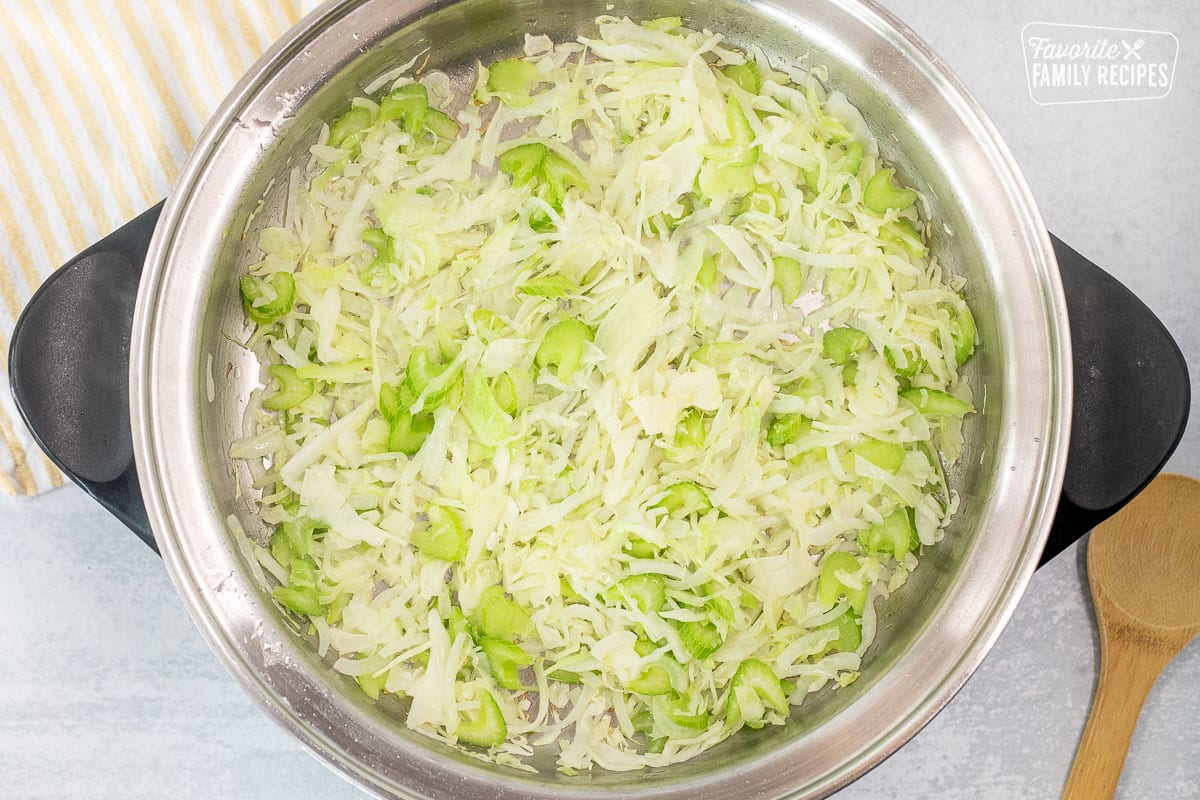
- Add noodles and soy sauce mixture to the vegetables. Stir-fry over medium-high heat for an additional 2-3 minutes or until noodles are heated through.

Notes
- In this recipe, you can add a shake or two of sesame oil to the vegetable oil to add a deeper flavor, but don’t overdo it! I am not including it in the recipe because the sesame oil flavoring can become overpowering really quickly if you aren’t careful. I have made it both ways (with and without sesame oil) and they both taste great.
- Feel free to add more vegetables or a variety of vegetables to your chow mein. Just because Panda Express only uses onions and celery doesn’t mean you have to limit yourself!
- Yakisoba noodles can be found in the produce section of the grocery store. Usually, the three packages are sold together in a single 17-ounce pack.
- Don’t overcook the noodles. Overcooking them can cause them to break. You want them to be just heated through.
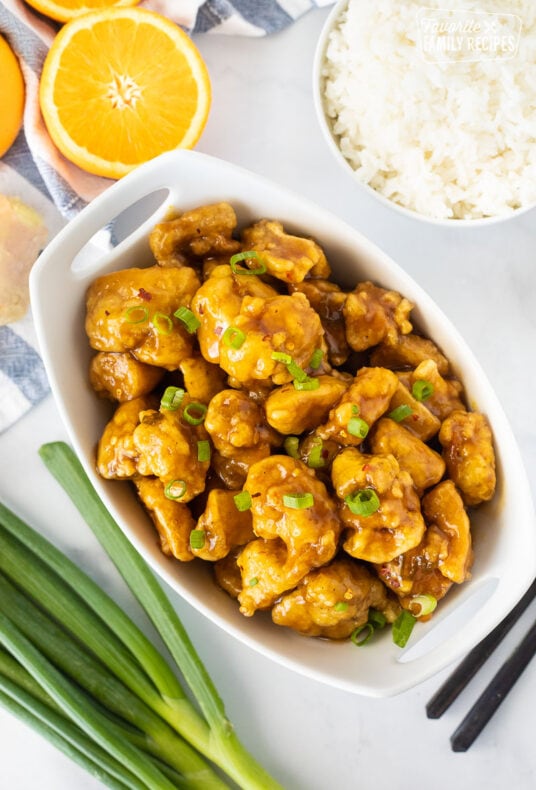
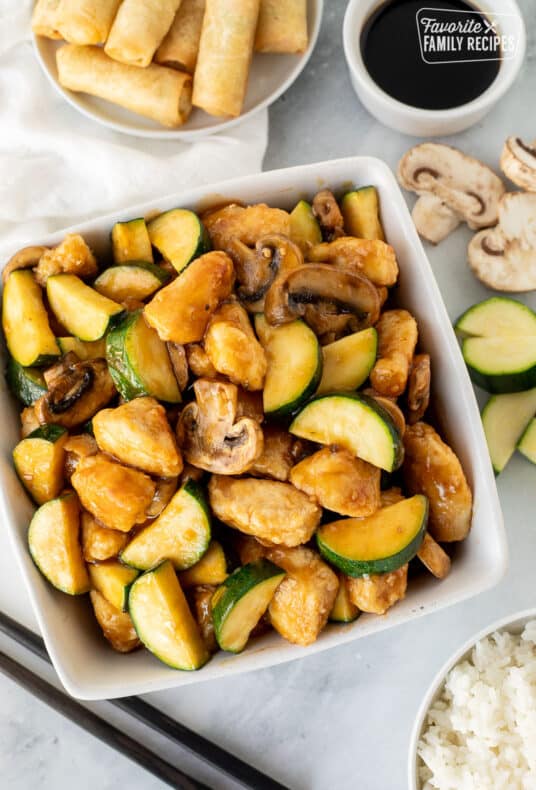
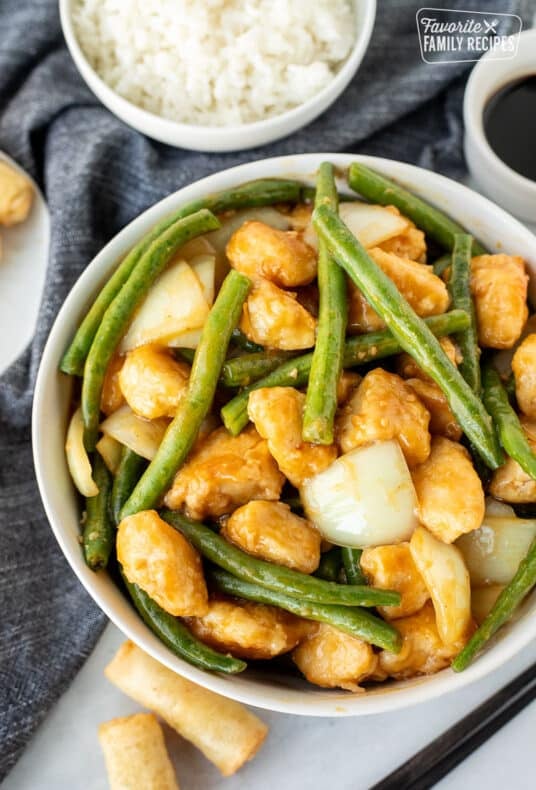
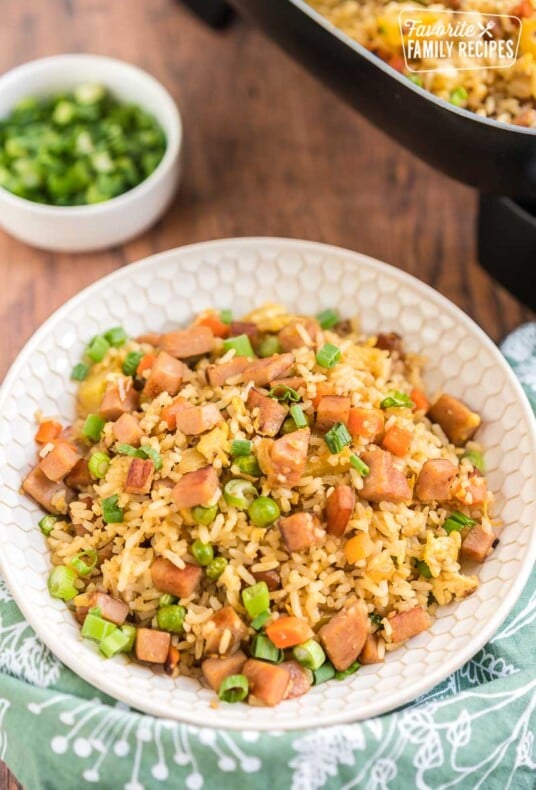
Your website is a real find! It sure was nice to enjoy chow mein that was not covered in oil. Absolutely yummy and very easy. I added tiny broccoli florets, and shredded carrots. And a smidge of sriracha. Anyhoo…thanks! Can’t wait to try some more of your recipes!! 🙂
This is delicious! Way better than Panda’s 🙂 i substituted the store noodles for stir fried regular spaghetti pasta 😀 it was do flavorful and yummyyyyyyyyy! Thank you
added to my comments of June 21, 2013, I did not use the soba noodles I used thin spaghetti.
I have made it four times since and I will continue to make it frequently with the thin spaghetti
Delicious!!!!
This is going to be a little silly but,
I can’t believe you discard the seasoning packets. The fresh yakisoba three pack seasoning have the most unique and amazing flavor. I’ve been eating them for years, and they are much better then any chow mein. I almost want to tell you to send them to me, I love them that much.
As I said, silly, but it hurt my heart when you said you discard them. If you’ve never actually tried it, I urge you to do so.
Sorry to make you so sad! We use the packets in other yakisoba dishes.. just not this particular one. 🙁 Next time I will have to save them and just mix them with other stir-fry dishes!
I did like the instrucctions but it tasted too salty!! What was the problem?
This is the easiest and the BEST! The copycat Panda Express chow mein recipe is right on! I did add a little more cabbage but
I couldn’t stop eating it! Since it was suppose to be for my family’s dinner I now have to make more! YUMMY!!!!
why are you rinsing the noodles? just put it in the pan and add a little water to let the hot water/steam break up and warm the noodles while incorporating it into the rest of the dish
I rinse the noodles because that it what it says to do on the Yakisoba noodle package. I don’t know why the suggest you do it… I just figured it would be a good idea.
The only Asian noodles I eat are from Panda. I usually eat them every couple weeks and every time I go, I spend my entire meal trying to figure out what noodles they are. LOL
Today, I finally got brave and decided to buy some that I thought were the correct ones to try at home. Now I’m worried cuz I got them off the regular Asian aisle, not the fridge section. I’m praying I have the right kind of noodles. I’m gonna try using your recipe. Wish me luck! Thanks for the recipe!! Can’t wait till dinner.
Good luck!!! Let us know how it turns out for you!
Oh goodness…..YUM!!! This recipe is so similar to Panda! As I stated before, I ONLY eat Panda’s noodles (cuz I’m so picky when it comes to any Asian dishes) and I LOVED this version. My noodles did turn out to be the wrong ones, but they did work. The texture was a little softer like spaghetti noodles, but the flavor was spot on. I saved the recipe and will find the correct noodles now that I have a name and kind of noodle. I am sooooo happy!! Thanks again for the yummy recipe!
So glad that you liked them!!! Glad that those other noodles worked too! 🙂
you are rinsing the extra starch off of the noodles. this helps with having them NOT stick to the bottom of your pan. I missed this step only one time (second time I made) and they stuck HORRIBLY! This is something I make on a pretty regular basis. We LOVE noodles at our house – no rice for us 🙂
I am glad you said something! Thank you for your comment!
So you suggest not to drain the noodles? Will it prevent them from sticking to the pan? Sorry first time making noodles (:
On the recipe it says to rinse the noodles well.. then to drain. Where are you seeing not to drain them?
Thought it was okay, not terrible, but kids who are giant Panda Express fans wouldn’t touch it. I got to make two dinners.
Not even close to Panda Express.
Stir-fry: When using spaghetti or any kind of Asian-style noodles — like soba, udon, or rice noodles — for stir-fry, they should always be rinsed after cooking. The starchy film on the noodles would otherwise make them gummy and clump together when stir-fried. Rinsing does cool the noodles down, but this is fine since they’ll be cooked again in a hot pan. I found this info on thekitchn (https://www.thekitchn.com/when-to-rinse-pasta-and-when-to-skip-it-tips-from-the-kitchn-219366). Apparently, this is mentioned in several websites on the internet. I had never heard this before and can’t verify that it works, but it may be why some folks are having trouble with sticky/gummy noodles.
Made this for lunch and added some frozen grilled chicken strips and my son and I loved it! Thank you!
Added cashews, chicken and used whole wheat spaghetti noodles….OMG
I added a handful of cashews, a shredded chickens breast and used whole wheat spaghetti noodles…OMG
Can’t wait to try this recipe. My family loves Panda Express. Just wondering what grocery store do you buy the Yaki Soba noodles at?
Thanks 🙂
We just found it at Albertsons. They also have it at Winco.. pretty much any grocery store you go to should have it in their produce section (sans WalMart.. I don’t know why they don’t have it).
Neither Kroger nor HEB has it. I’m dying to try this recipe! I hope Randalls has it.
It depends what state your in whe have it at Frys in healty food cooler
Made this last night with some grilled Asian chicken. It was such a great dinner. My husband is not a big fan of lo mein and he loved this, he had 3 helpings! This is a great copy cat recipe, and it tastes better than the original. We’ll definitely be making this again and again! Thanks for sharing.
OUTragouse I have found you neat Lo mein ty for sharing
This is sooo yummy! We don’t have a Panda Express in our town and this was perfect!! We certainly got our Panda fix! Defiantly makes this again, and again, and again………………!
Finally!!! I have seen other versions, but they include a lot of ingredients that aren’t found in Panda Express’. Can’t wait to try this as my son, 5, loves “Polar Express” as he calls it.
Made this for the fam tonight along with some teriyaki chicken. The Chow Mein was a HUGE hit – even with the hubby who is diabetic and doesn’t eat noodles (he went back for seconds).
Yum! I have this on my menu for the week. I’m wondering what that chicken recipe is in the background. I need a good chicken to go with it. 🙂
It is Jared’s General Tsos chicken from our site… My favorite!
I tried this today with an orange chicken recipe. The chow mein is better than Panda’s!! It was delicious! And so super easy! Now I just have to find a better orange chicken recipe and we are all set!
As easy, very yummy orange chicken recipe:
Cut uncooked chicken breast into 1 – 1 1/2 inch squares, roll in beaten egg, then bread crumbs and fry in pan (I use olive oil). Brown on both sides and put into casserole dish. Once finished with all the chicken pieces, pour Panda’s orange sauce over chicken. Cover pan with tin foil and bake on 350 for 30 minutes. This is my son’s favorite recipe.
Where can I find the Panda’s orange sauce?
I have found it at the grocery store.. just in the Asian section near the sauces.
You can buy it at panda if you can’t find it elsewhere. They sell them near the register.
I had this in my comment, but I’ll add it here as well. Here’s my original recipe that’s pretty good, only takes a couple of minutes, and is a lot cheaper then buying the bottled stuff.
Orange Chicken Sauce
1 can mandarin oranges
1/2 C sugar
2-3 T cornstarch (depending on how saucy you want it)
3 T soy sauce
Sweet chili sauce to taste
Add all to small sauce pan. Mash oranges with whisk or fork. Whisk over medium high heat until boiling, boil one minute.
CHINESE ORANGE CHICKEN
Prep Time
40 minutes
Cook Time
10 minutes
Total Time
50 minutes
Yield
4 servings
Not even Panda Express can beat this homemade orange chicken!
INGREDIENTS
1 1/2 pounds boneless, skinless, chicken breasts, cut into 1-inch chunks
1 cup 2 tablespoons cornstarch, divided
2 large eggs, beaten
1 cup vegetable oil
1/2 teaspoon sesame seeds
1 green onion, thinly sliced
FOR THE MARINADE
1 cup chicken broth
1/2 cup freshly squeezed orange juice
1/2 cup sugar
1/3 cup distilled white vinegar
1/4 cup soy sauce
2 cloves garlic, minced
1 tablespoon orange zest
1 teaspoon Sriracha, or more, to taste
1/4 teaspoon ground ginger
1/4 teaspoon white pepper
INSTRUCTIONS
To make the marinade, whisk together chicken broth, orange juice, sugar, vinegar, soy sauce, garlic, orange zest, Sriracha, ginger and white pepper in a large bowl.
In a gallon size Ziploc bag or large bowl, combine chicken and 2/3 cup of the marinade; marinate for at least 30 minutes, turning the bag occasionally. Drain the chicken from the marinade, discarding the marinade.
Heat remaining marinade in a medium saucepan over medium heat. Bring to a boil and stir in 2 tablespoons cornstarch combined with 2 tablespoons water. Cook, stirring frequently, until thickened about 1-2 minutes; keep warm.
Working one at a time, dip the chicken into the eggs, then dredge in remaining 1 cup cornstarch, pressing to coat.
Heat vegetable oil in a large saucepan. Working in batches, add chicken and fry until golden brown and cooked through, about 1-2 minutes. Transfer to a paper towel-lined plate; discard excess oil.
Serve chicken immediately, tossed or drizzled with the marinade, garnished with sesame seeds and green onion, if desired.
Oh man I am so excited to try this! I can’t get enough of this stuff every time I go to panda! Thanks for posting, I can definitely see this recipe becoming my go-to!
Yum! Thanks so much for sharing. Pinning now, hopefully it won’t be long before I try it.
Dezi It’s been 8 years. Have you tried it yet?
I have been searching for this recipe forever! Can’t wait to try it.
Jenn did you ever try it?
Recipe awful. Tasted like pasta with soy sauce on it. No flavor. Panda pasta looks like spaghetti not ramen. Very disappointed